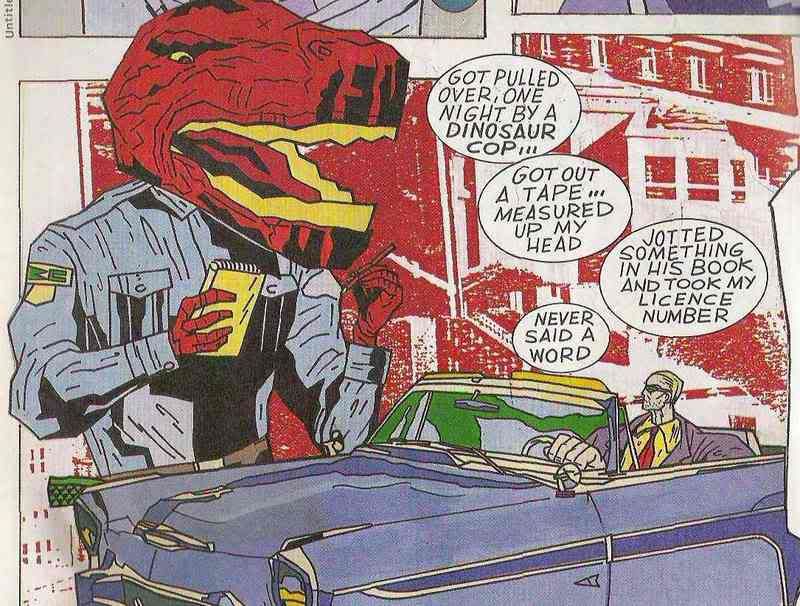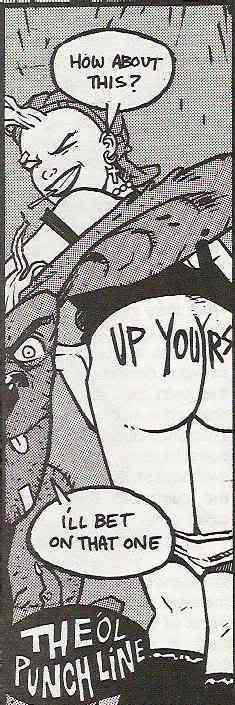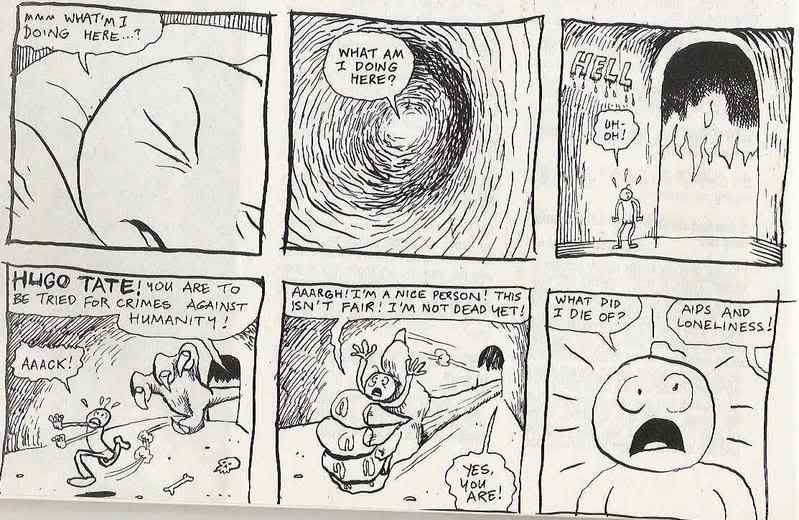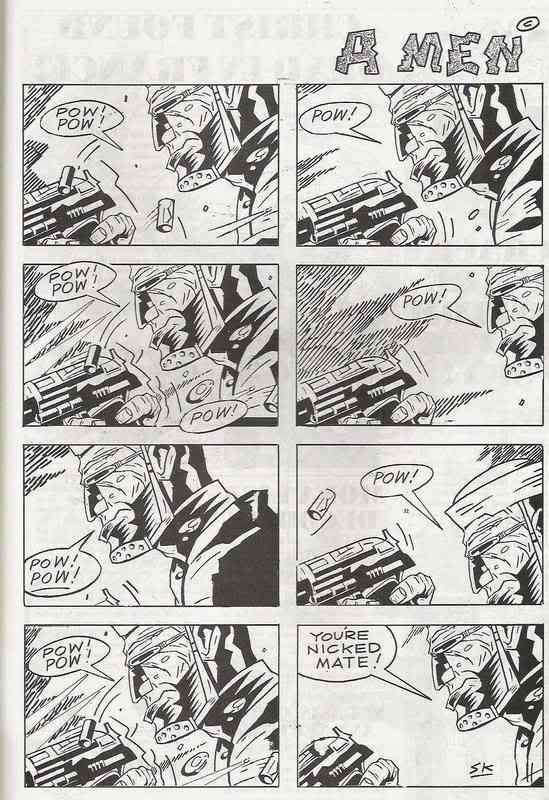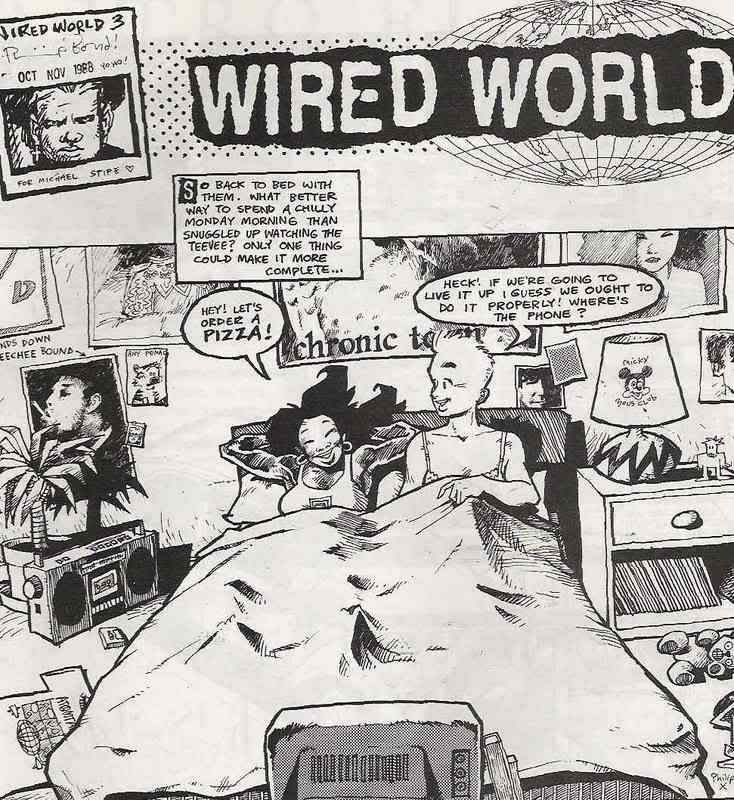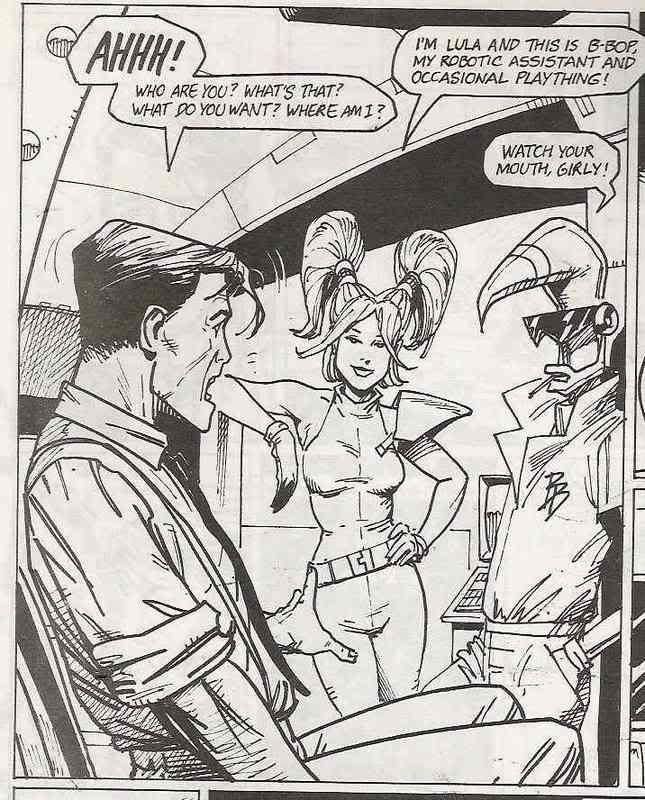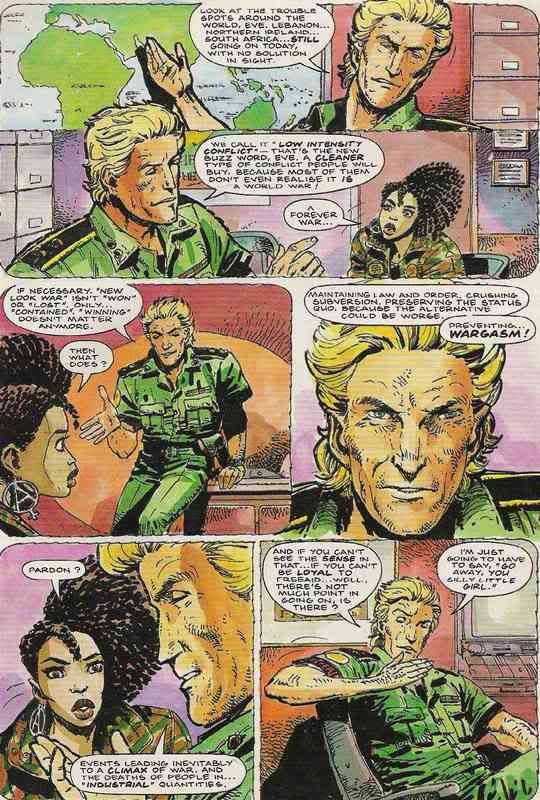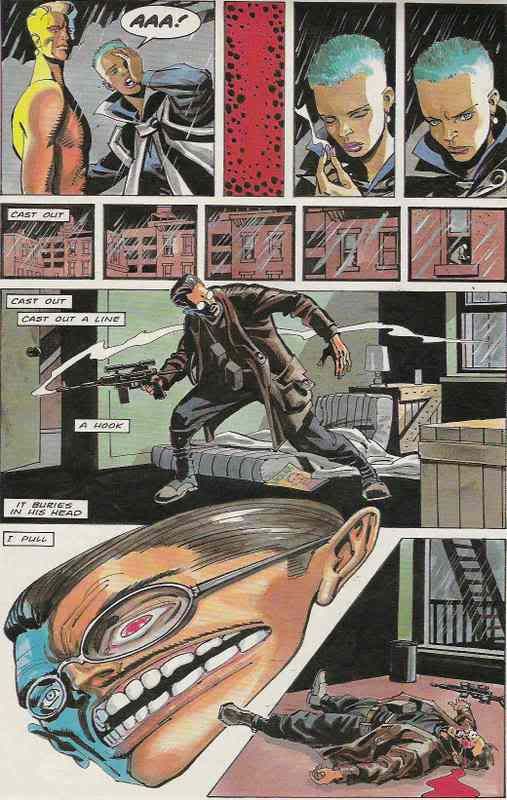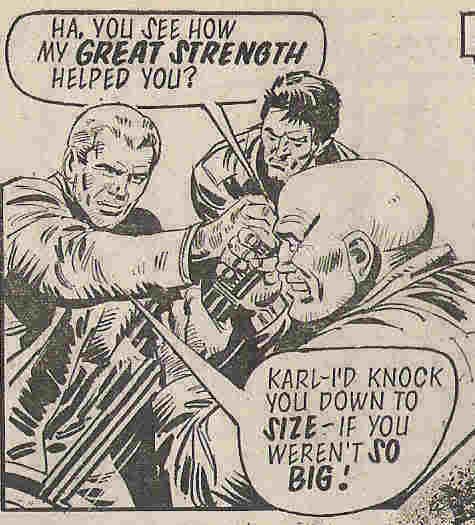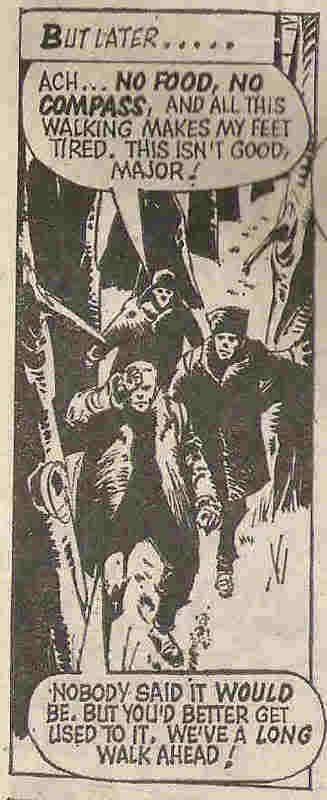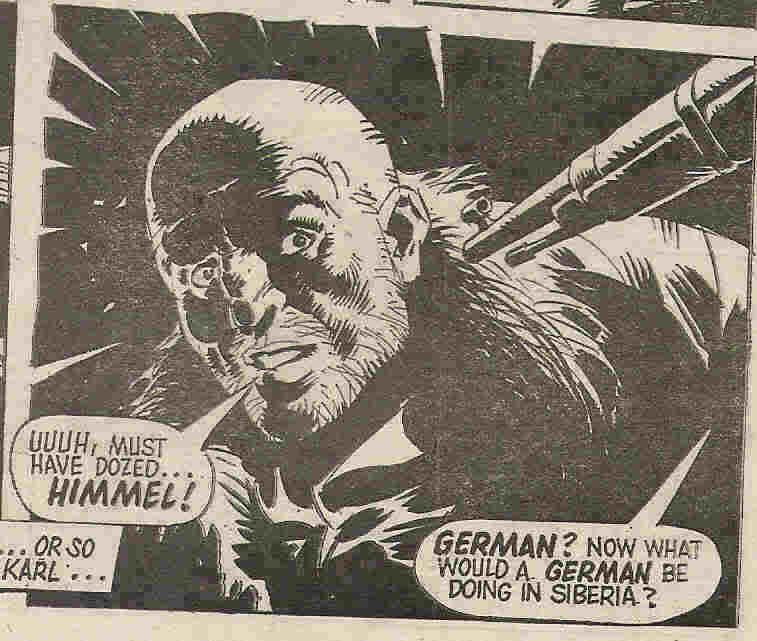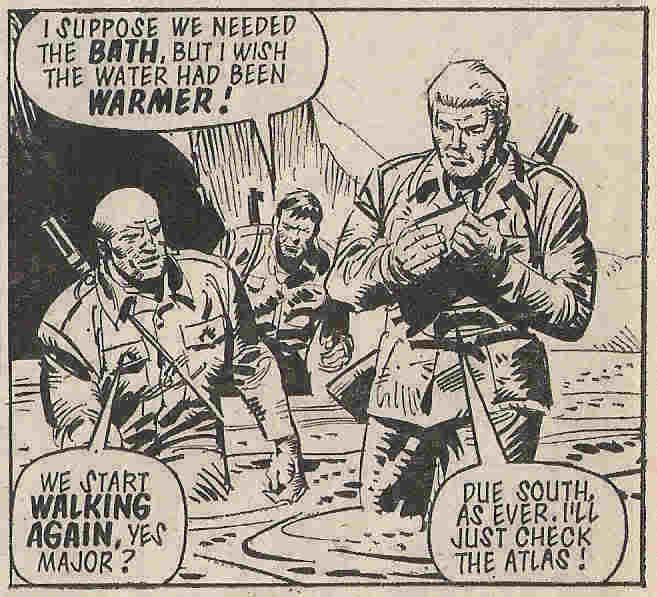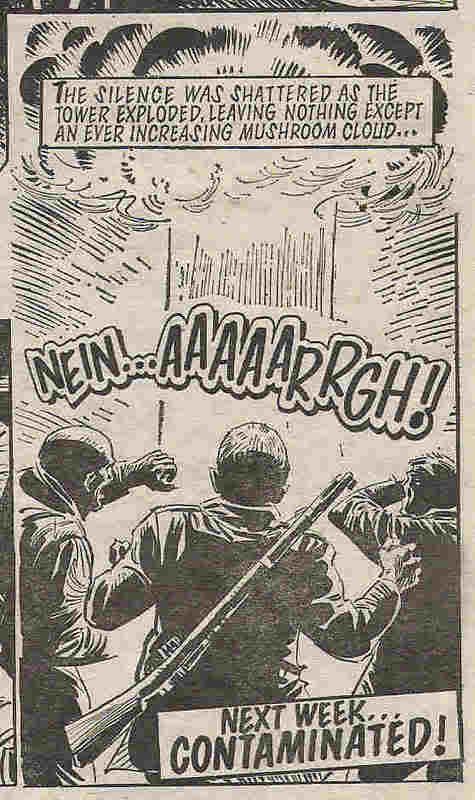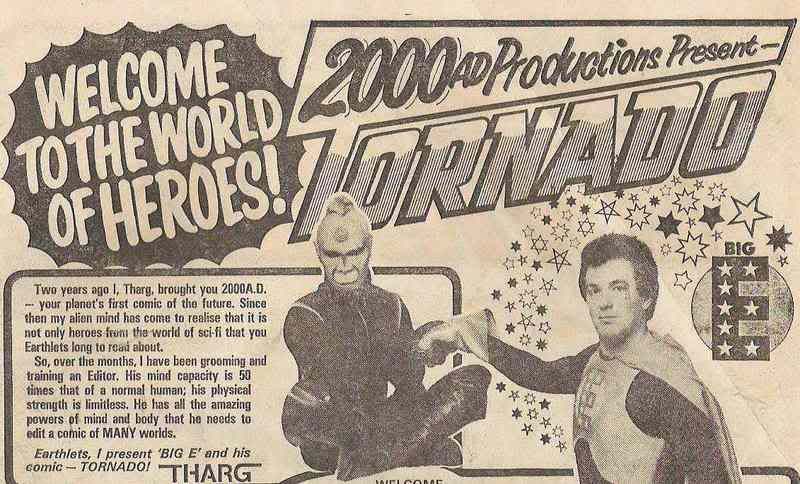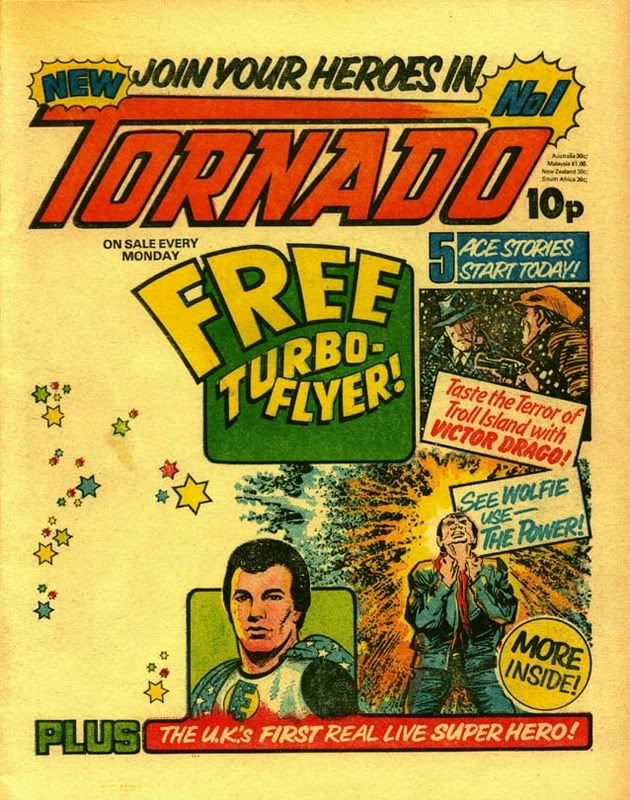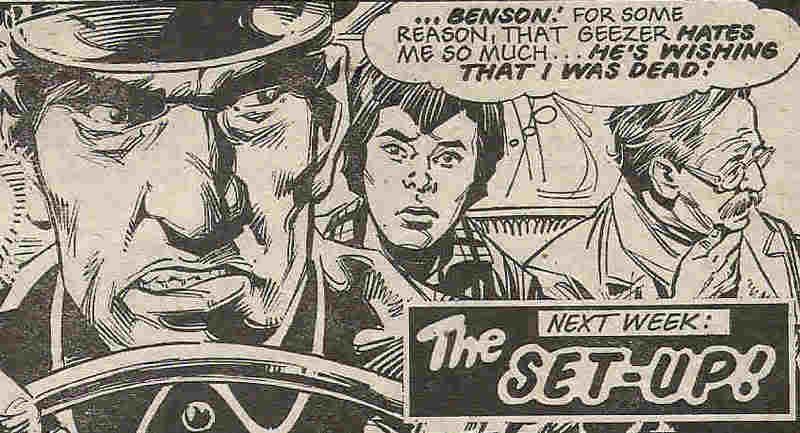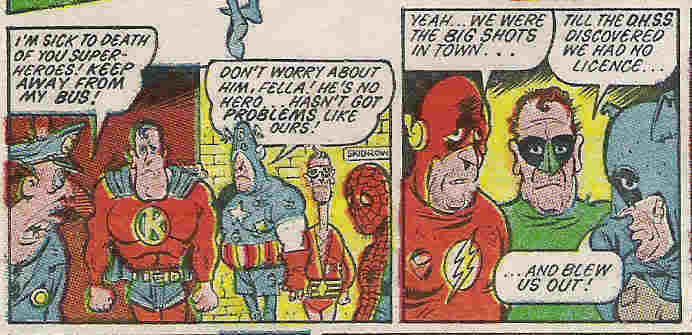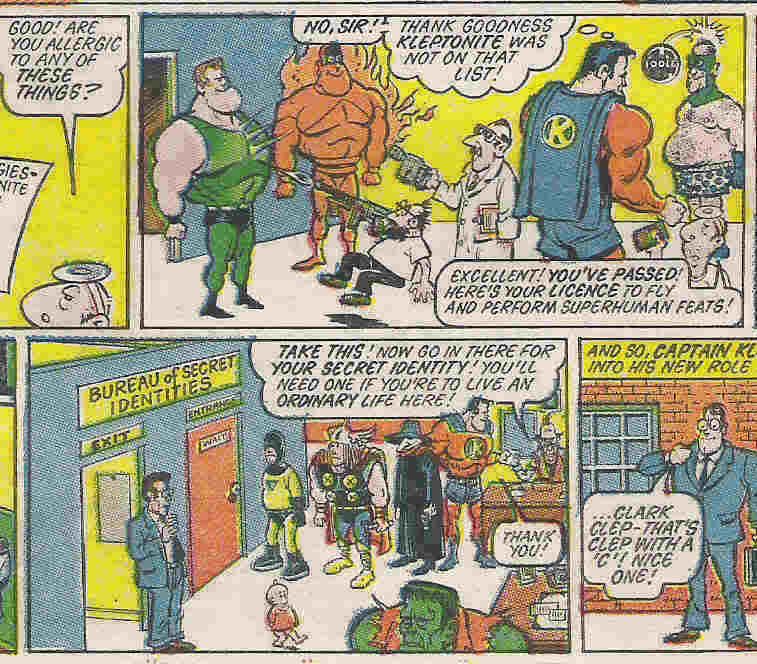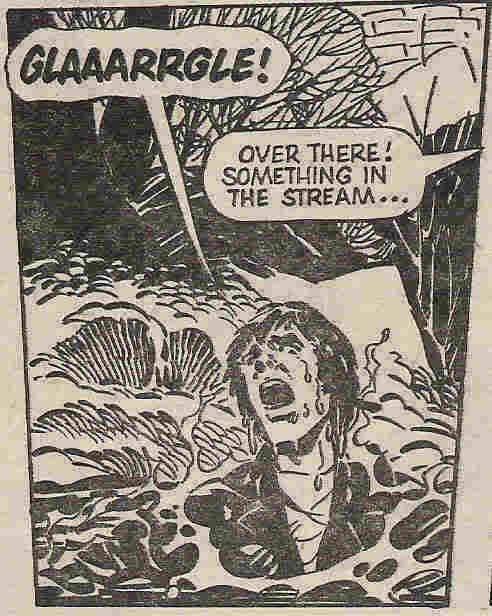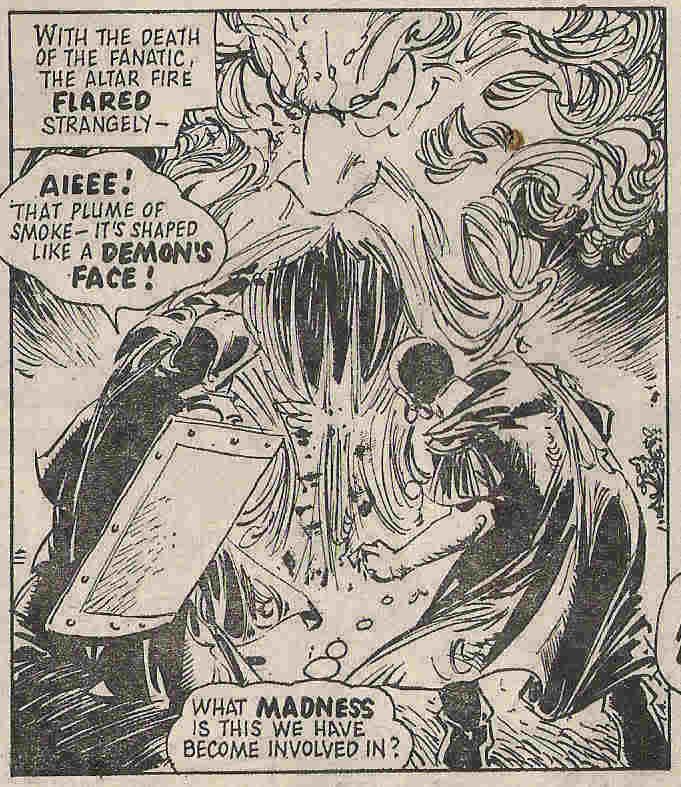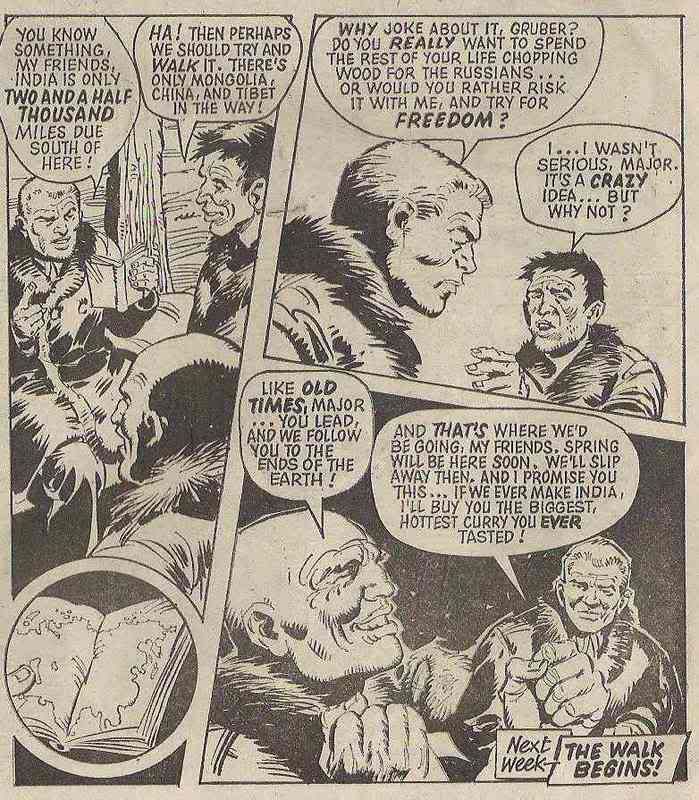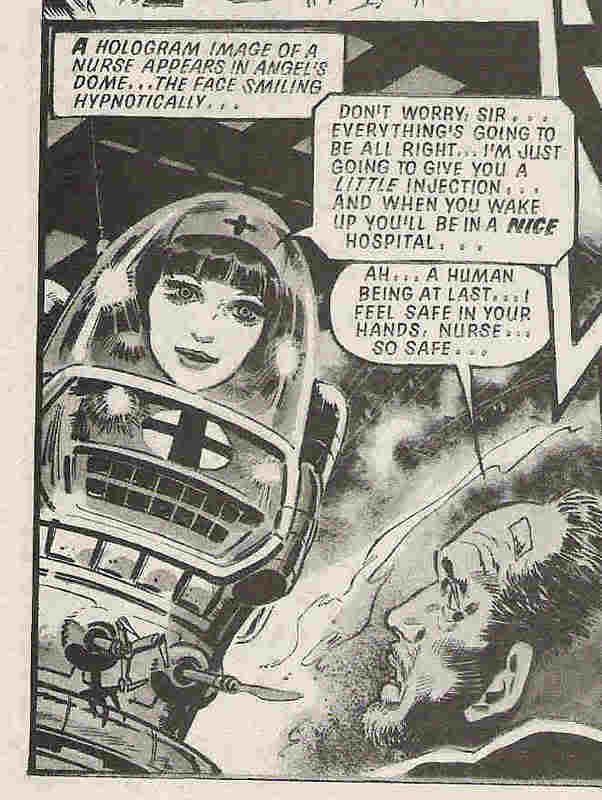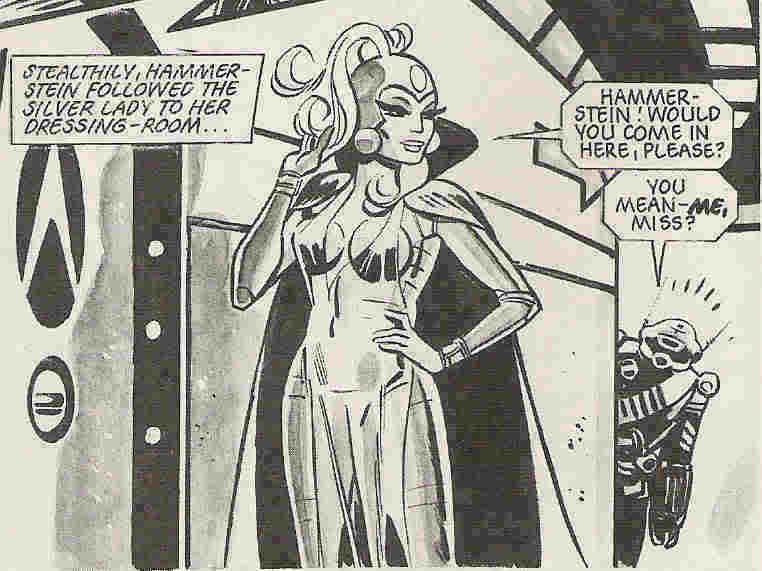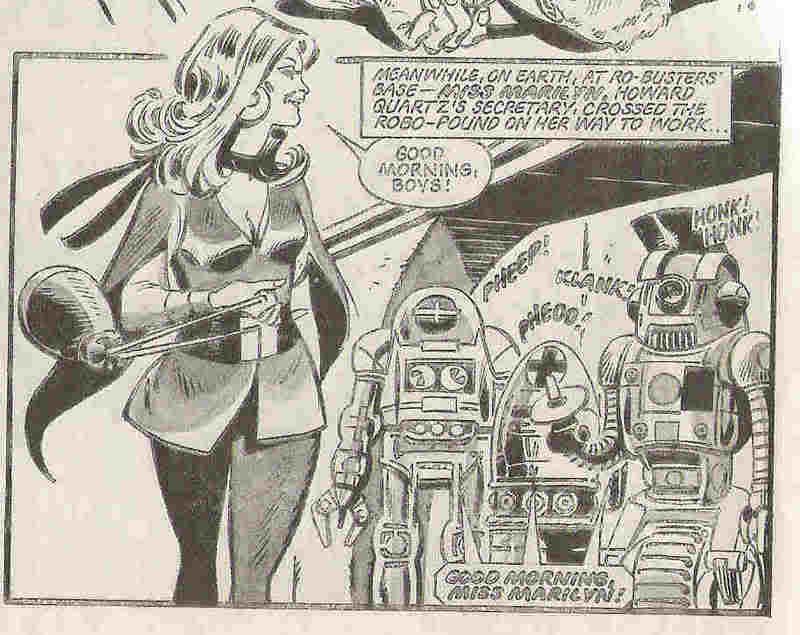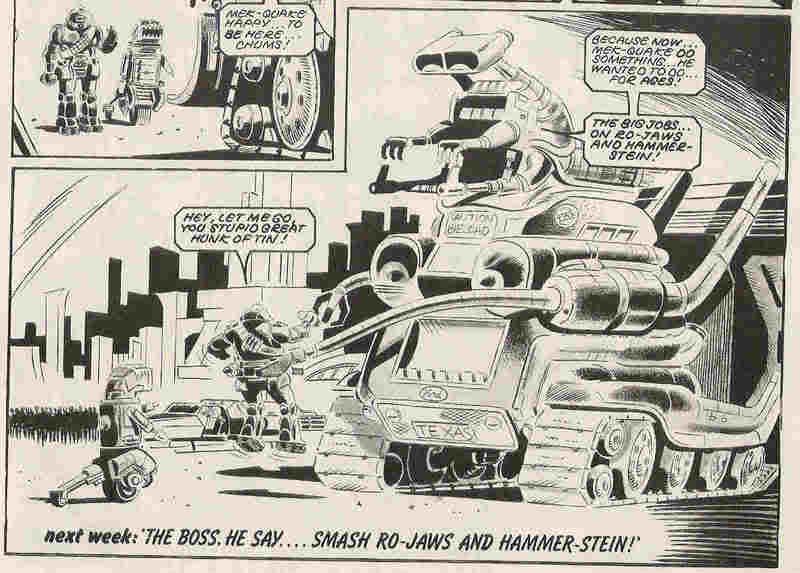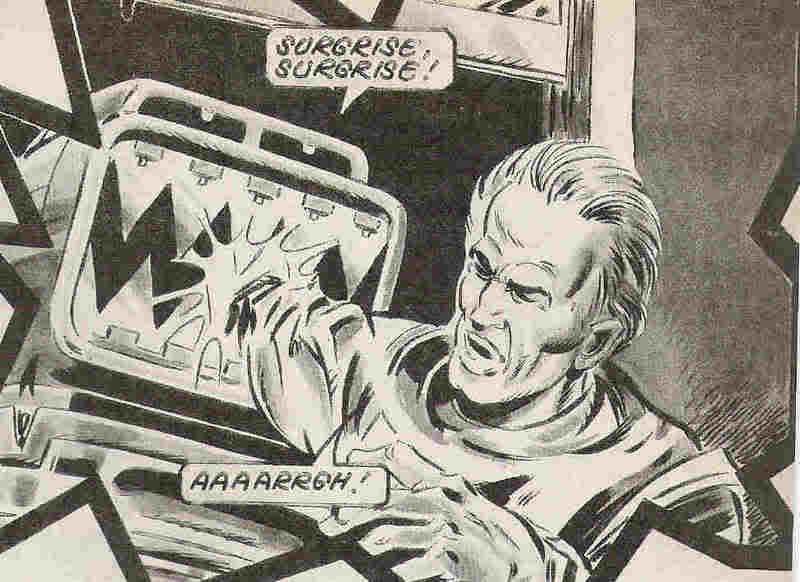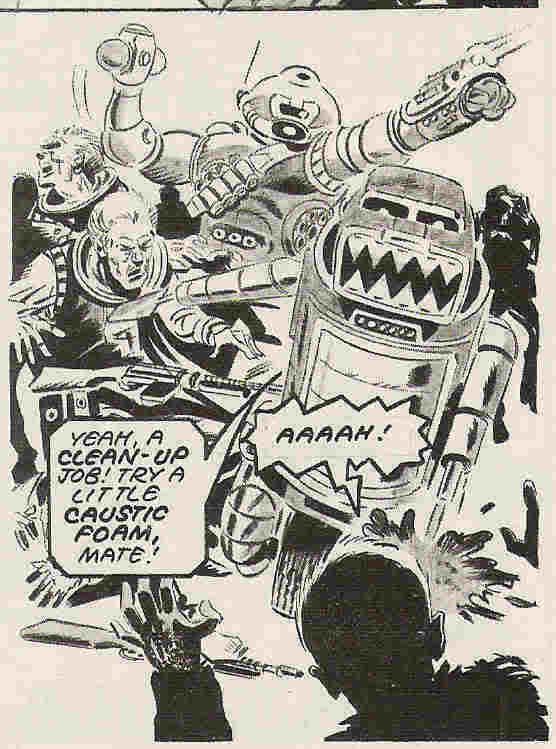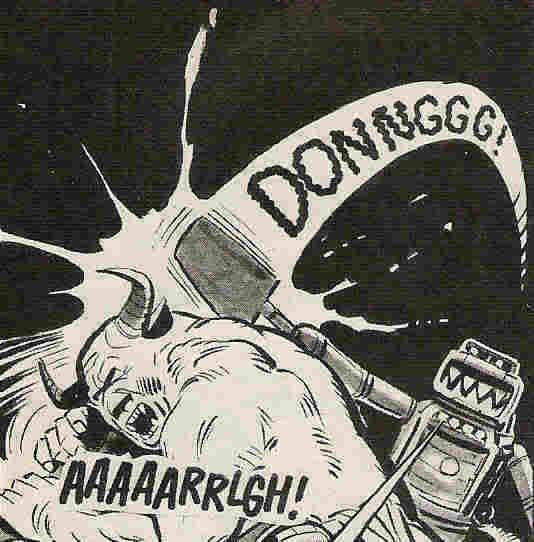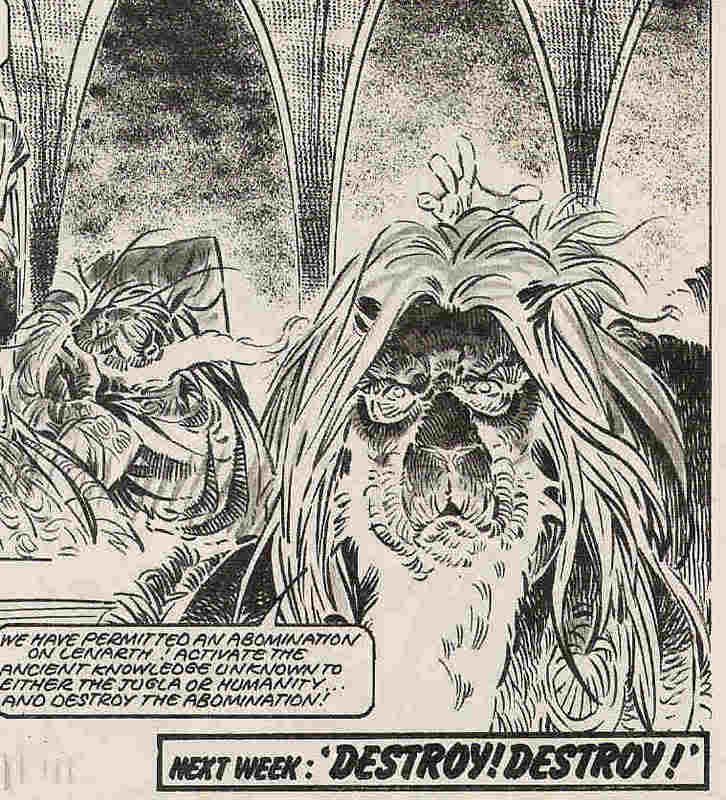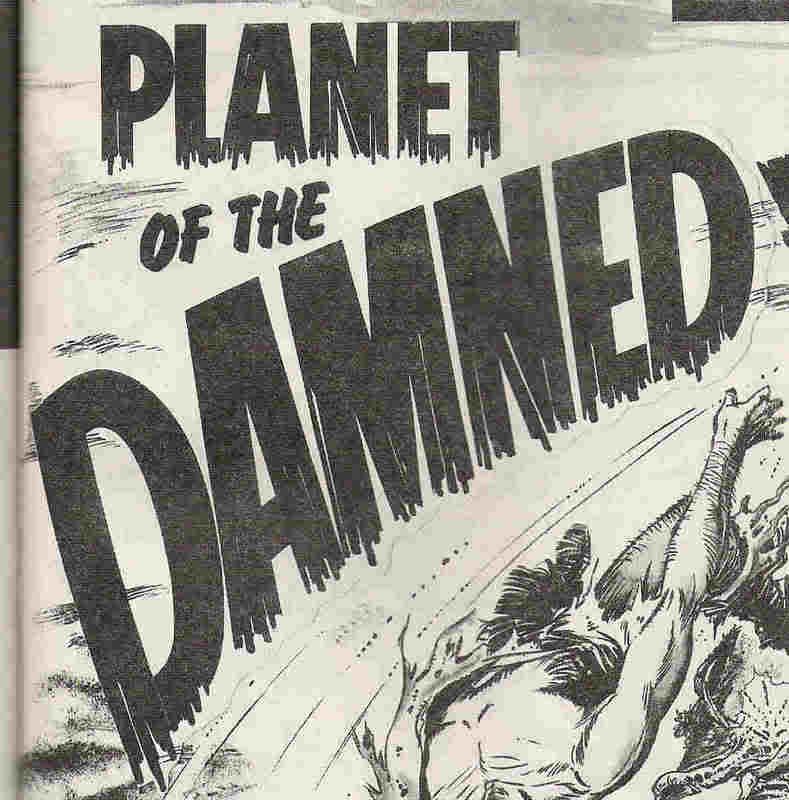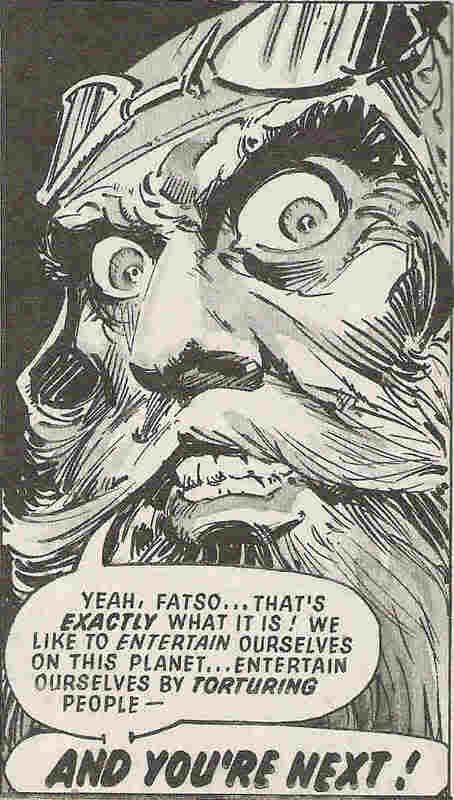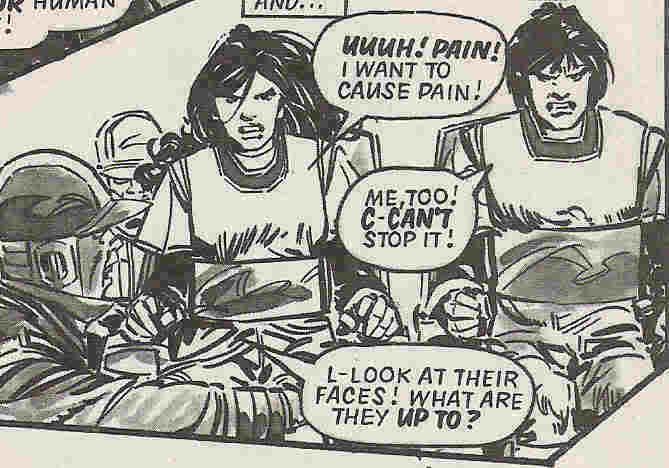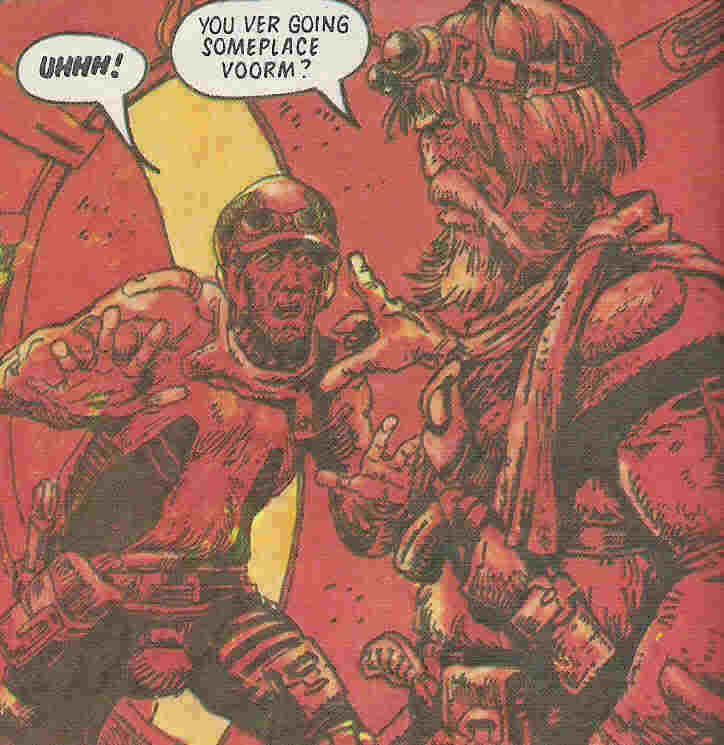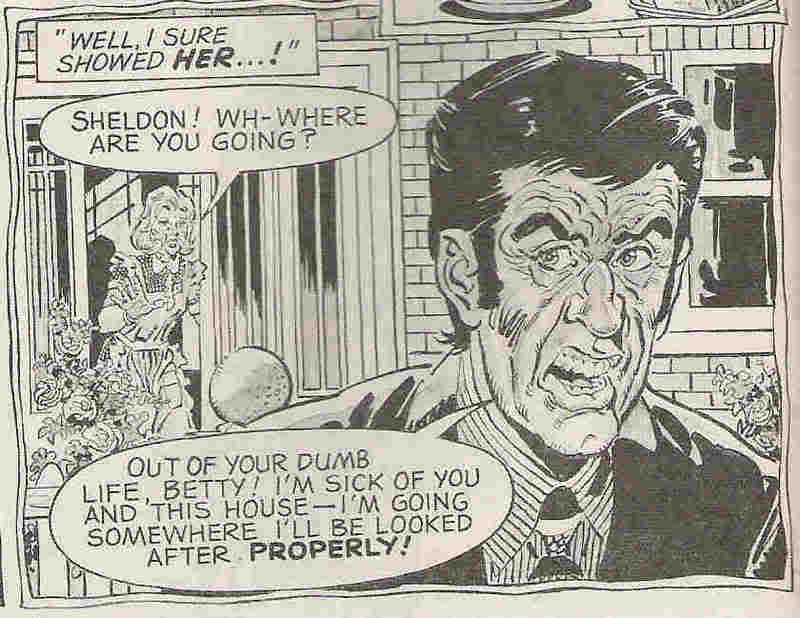The beginning of the end of the comics revolution
 I couldn't say whose idea the whole thing was, but this editorial was written by one Peter K Hogan, who would go on to be one of 2000 AD's more reliable writers in the much-maligned Progs 800-1000. And I'm pretty sure I read somewhere that Alan Moore hand-picked him as one of the few people he trusts with his ABC universe of characters. Certainly in Revolver he comes across as a nice guy. He'd like to be cool, sure, but he's not gonna try that hard, and he cerainly knows his place in relation to his waycool Revolver contemporaries such as Grant Morrison, Pete Milligan and Brendan McCarthy. Which all makes me like him more, as I'd like to think I'm that sort of person, too.
I couldn't say whose idea the whole thing was, but this editorial was written by one Peter K Hogan, who would go on to be one of 2000 AD's more reliable writers in the much-maligned Progs 800-1000. And I'm pretty sure I read somewhere that Alan Moore hand-picked him as one of the few people he trusts with his ABC universe of characters. Certainly in Revolver he comes across as a nice guy. He'd like to be cool, sure, but he's not gonna try that hard, and he cerainly knows his place in relation to his waycool Revolver contemporaries such as Grant Morrison, Pete Milligan and Brendan McCarthy. Which all makes me like him more, as I'd like to think I'm that sort of person, too.And what of the comic itself? Well, each of its seven issues is gorgeous to behold. Designer Rian Hughes is gold here. And the full-colour with glossy covers thing is beautifully produced - perhaps it set the standard for comics and magazines to come? The content is, shall we say, worthwhile. It tries really hard to appeal to a new audience, with an impressive array of talent, great diversity in terms of art and writing styles, genuinely different from other comics (as far as I know, anyway), and sadly, it fails.
Could it be the proof that there just isn't a very wide audience for grown-up comics? It doesn't help that the best story in Revolver was Dare - a future history of the Eagle character. And however good it is, it does rely on a certain knowledge not to mention love of retro comics. Most of the other strips in Revolver are also extremely good. So it's a source of great consternation to me that the comic failed. I guess people who want to read intelligent comics aren't into the weekly/monthly installment thing. After all, in all other media serialisation lends itself to escapism rather than study. And maybe the anthology format doesn't help here, as I can imagine readers who each liked one or two strips but hated/ignored the others. Revolver's strips were a showcase of passion but with little coherence beyond being intended for an adult mind. As opposed to 2000 AD, whose sci-fi basis means that all of its strips are similar enough in feel that it's unusual to have that problem. (Sure, there are examples of strips that didn't quite fit in, but there was always a level of coherence, I felt)
Now, a quick round-up of the details:
Dare is excellent all round. Seek it out in the trade collection which may or may not be reprinted soon. The only complaint about it now is that it's too indebted to a hatred of the Thatcher years, but on the other hand that makes it a rather intriguing historical essay as well (for me at least). A letter-writer also claims that the story works as a metaphor for Frank Hampson's treatment by the publishers of the original Dan Dare. Interesting.
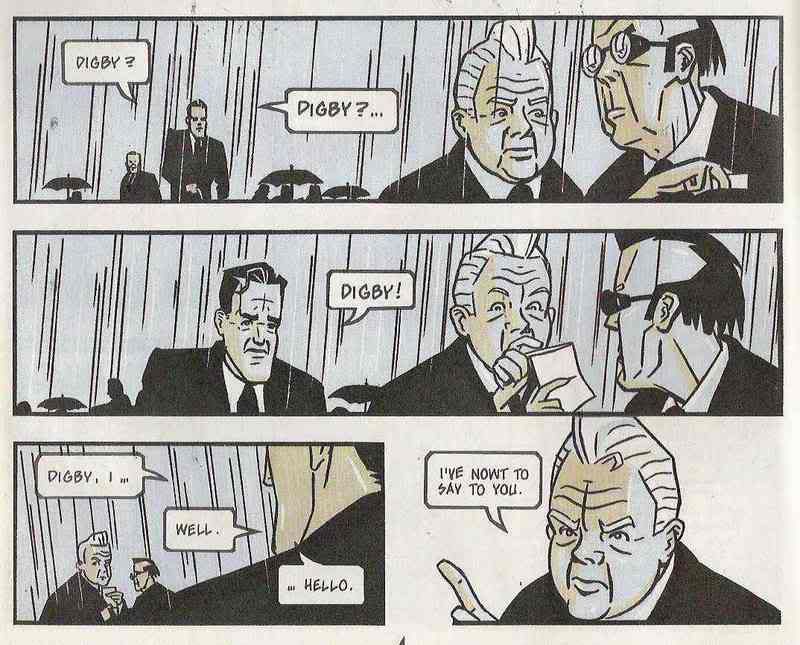
Purple Days, the Jimi Hendrix story is also impressive.
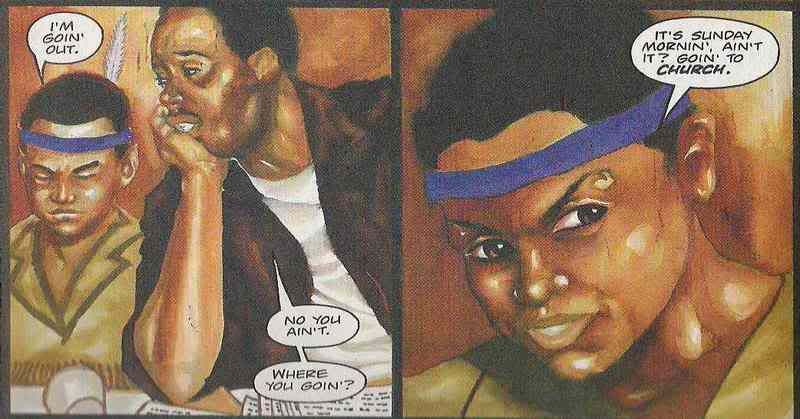 I know nothing about him and have little interest in his music (although at some level I feel I ought to have some). But that doesn't stop this from being an utterly engaging story, with jsut the right kind of photo-realistic painted art. If I was into the music more, I expect I'd find even more layers of sophistication. On the other hand, it might make the whole thing more trite if I found out the creators were simply lifting lyrics directly onto the page or something. Anyway, good stuff.
I know nothing about him and have little interest in his music (although at some level I feel I ought to have some). But that doesn't stop this from being an utterly engaging story, with jsut the right kind of photo-realistic painted art. If I was into the music more, I expect I'd find even more layers of sophistication. On the other hand, it might make the whole thing more trite if I found out the creators were simply lifting lyrics directly onto the page or something. Anyway, good stuff.Happenstance & Kismet. I can't stress how much I dislike this strip. Steve Parkhouse on art is sublime, which makes it all the more frustrating that I literally can't bring myself to read the words around it, full of Hale & Pace humour as it is. Sure, the guy who comes out out swear words in foreign languages is occasionally funny, but that's about it. At least the strip can claim to be a solid representation of a certain kind of Britishness.
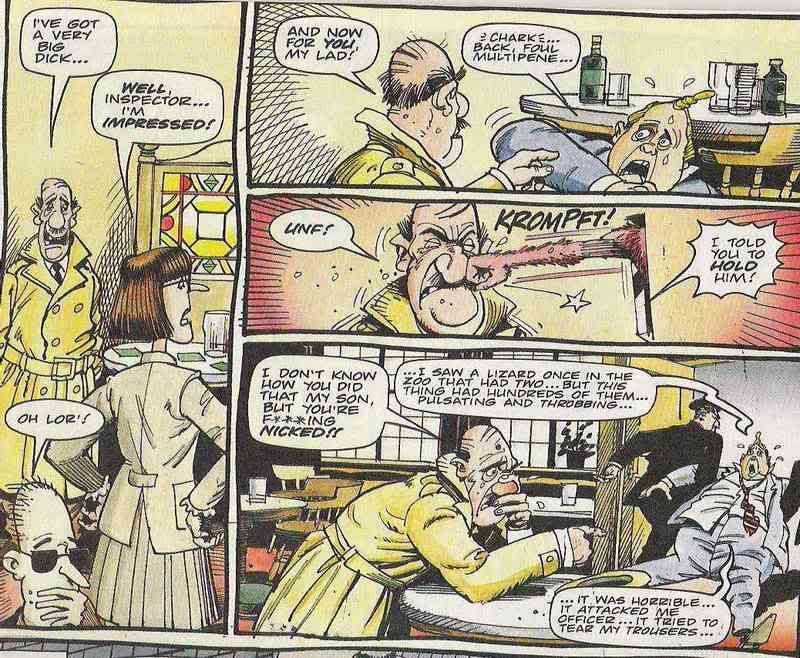 Admittedly, the dick joke at the beginning of this excerpt is actually pretty funny if you read the set-up line on the previous page. But it's not exactly ground-breaking stuff, is it?
Admittedly, the dick joke at the beginning of this excerpt is actually pretty funny if you read the set-up line on the previous page. But it's not exactly ground-breaking stuff, is it?Dire Streets, on the other hand, I really like. Julie Hollings is not in the least flashy in her writing or her art - as everyone else in Revolver tries to be - but nevertheless she's created the most likeable strip. It's pretty much This Life: the student years but with a touch less glamour. The characters are all equal parts horrible, annoying, recognisable, and just sympathetic enough. I feel bad about describing it as girly, but it is, and that's one of the best things about it.
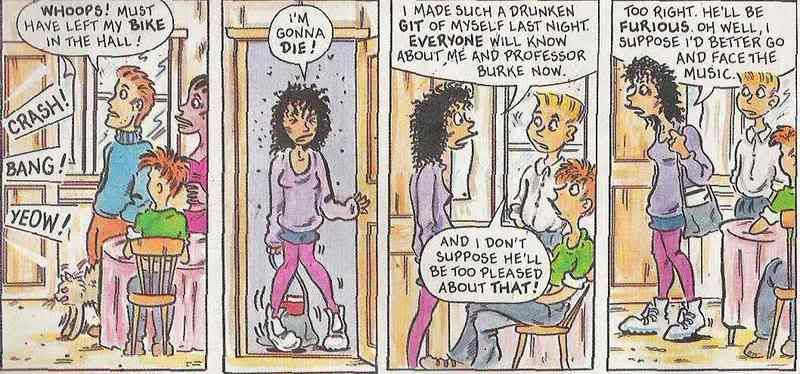
Rogan Gosh is a masterpiece of the comics medium, no question. It's also deliberately hard to read as a narrative, which makes it frustrating. But I will say that's it's worth owning a run of all 7 issues of Revolver so that you can dip into this strip and be inspired by it. The excellent printing quality helps as McCarthy has all his coloring pens out for this baby. I suppose it helps me to enjoy it that the whole thing is a meditation on how white Londoners imagine a Hindu mythology might interact with their lives - which is something I can get in touch with having grown up in West London and studied a bit of Sanskrit and Hindu theology/mythology. Of course it's also massively up its own arse, however hard Milligan and McCarthy try to bring it all down to earth and laugh at themselves along the way.

Otherwise Revolver featured a number of one-of strips by some pretty superb artists - Simon Harrison, Warren Pleece, Glenn Fabry - but fell into the then-Image trap of letting these artists put words to their own pictures. Now, a great comics artist has to be able to tell a story with his pictures, but not all of them can make that story worth reading. To jump across to Superhero comics for a bit, one only has to recall the Stan Lee / Jack Kirby work pattern to see that Lee's dialogue was essential to making the early Marvel comics fun to read every month. I can see that Kirby's solo stuff such as New Gods is impressive to behold in its grand narrative and its bizarre plotting, but frankly it's hard going to wade through. Peter Milligan can write deliberately pretentious bollocks and inject some meaning into it, but most artists (hell, most other writers) can't. And when they try, people stop buying the comics. But of course they should try - it's simply that editors need to stand up to them when it doesn't really work.
At least Shaky Kane keeps his diverting but never really funny or clever pieces to a simple double-page spread...
